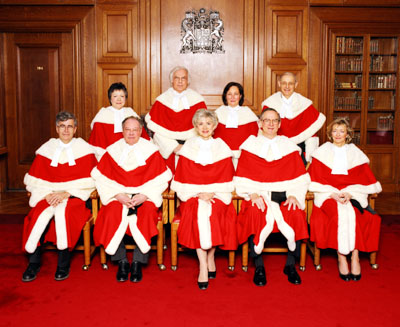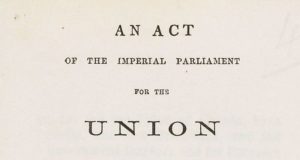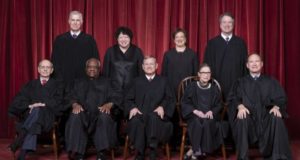The 10th anniversary of Dunsmuir presents an opportunity to revisit perhaps its most controversial aspect: the seeds it planted for a presumption of deference on home statute interpretation. As Professor Daly notes, the presumption is a “black hole” which engulfs questions of statutory interpretation in administrative law: Paul Daly, “Unreasonable Interpretations of Law” in Judicial Deference to Administrative Tribunals in Canada at 235-36. To the Supreme Court, the presumption exists because “expertise …inheres in a tribunal itself as an institution” (Edmonton East, at para 33).
In this contribution, I will engage with what I call the “dark art of deference” that Dunsmuir entrenched: the seamless transfer that courts make from expertise in policy to expertise in other matters, including statutory interpretation (Edmonton East, at para 83). The mere fact of membership in a shadowy guild of expertise does not a legal expert make.
Here, I aim to: (1) demonstrate that expertise writ large does not provide a sound justification for deference on questions of law, unless incorporated into the decision-maker’s enabling statute and (2) relatedly, argue that deference is not prescribed by extralegal justifications such as expertise, but only by statutory language, which determines the leeway a court should afford to a decision-maker. The presumption of deference, which could run against statutory language, should be abandoned.
My comments start from three propositions which are rooted in constitutional theory: (1) absent constitutional objection, legislation binds; (2) administrative decision-makers enabled by statute can only go so far as their home statute allows (3) it is a court’s job, on any standard of review, to enforce those boundaries; in American terminology, to “say what the law is” (Marbury v Madison; Edmonton East, at para 21).
***
As early as the seminal case of CUPE v NB Liquor, “expertise” has been used to justify deference on questions of home statute interpretation. Yet beyond this general proposition, Canadian administrative law history “reveals…that little work has been done to pinpoint exactly what the concept of expertise means…”: Laverne Jacobs and Thomas Kuttner: “The Expert Tribunal.” Perhaps as a result, the problems associated with expertise as a basis for deference have not been extensively explored.
Most basically, expertise may be a valid practical justification for deference, but it is hardly doctrinally valid. To treat a decision-maker’s decision as binding on the basis of expertise abdicates the role of courts in enforcing statutory boundaries. While the court still nominally retains this power under the presumption of reasonableness, the presumption is virtually irrebuttable. As Justice Scalia once wrote:
If I had been sitting on the Supreme Court when Learned Hand was still alive, it would similarly have been, as a practical matter, desirable for me to accept his views in all of cases under review, on the basis that he is a lot wiser than I, and more likely to get it right. But that would hardly have been theoretically valid. Even if Hand would have been de facto superior, I would have been ex officio so. So also with judicial acceptance of the agencies’ views…
This criticism, compelling as it is, has not been so for Canadian courts, with Edmonton East as proof positive. Courts on judicial review do view expertise as a valid doctrinal reason for deference, and are willing to put aside their own interpretation of a statute in favour of a decision-maker’s. This could be defensible, at least practically, if courts deferred on the basis of expertise which existed empirically. But in the post-Dunsmuir world, courts do not investigate expertise empirically before determining whether the presumption of deference applies. The presumption, though justified by expertise, can exist despite it. Yet as Professor (now Premier) MacLachlan says, if expertise is to support a presumption of deference, interrogation of a decision-maker’s expertise cannot be avoided indefinitely.
In the “pragmatic and functional era” which predated Dunsmuir, the courts did not avoid the question of expertise in determining the standard of review. Even though privative clauses were given less emphasis as clear statutory signals (see Pezim and the discussion in Khosa, at para 87), there was still a focus on determining relative expertise. For example, in Pasiechnyk, the Court was faced with a question of home statute interpretation. The Court considered the composition, tenure, and powers of the Saskatchewan Workers’ Compensation Board before holding that the decision-maker was expert on the matter before it. In Pushpanathan, at para 33, the Court noted that “expertise must be understood as a relative, not an absolute concept” and reasoned that courts must conduct an analysis in each case to compare its expertise to the decision-maker’s on the matter before it.
Contrast Edmonton East, where there was an assumption of the decision-maker’s expertise, but no actual analysis. Professor Sirota calls this “post-truth jurisprudence” and justifiably so—the dissent noted that the decision-maker did not have expertise in matters of statutory interpretation, and noted that expertise acted as an unjustified “catch-all” for deference (Edmonton East, at paras 82-83).
The Edmonton East dissent points out the problem with an automatic presumption of deference. The role of courts on judicial review, to have the last word on the statutory boundaries of administrative decision-makers, is limited to reviewing whether the presumption is rebutted. Unfortunately, Dunsmuir, let alone Edmonton East, gave little guidance on when the fortified presumption of home statute interpretation could be rebutted: see Justice Cromwell’s reasons in Alberta Teachers. If legislative intent is the “polar star” of judicial review (CUPE v Ontario (Minister of Labour), at para 149), the search for that intent is attenuated by a game of categorical whack-a-mole with the correctness categories set out in Dunsmuir.
A presumption could be a useful legal device if it were true that most administrative decision-makers were expert in matters of statutory interpretation. Perhaps, it could be argued, decision-makers develop “field sensitivity” in legal decision-making even if they are not expert at the outset. As Professor Green notes, a presumption along these lines could save judicial review courts the transaction costs associated with conducting an exhaustive review of the expertise of decision-makers in every case.
But such a presumption is only useful if (1) the facts supporting its existence are generally, empirically true; (2) courts themselves actually conduct the analysis to determine whether the presumption is rooted in fact, as in the Pushpanathan analysis (assuming that something like “field sensitivity” could be measured empirically) and (3) there is clear guidance on how to rebut the presumption. None of these exist with the current presumption of reasonableness.
***
What is the alternative if expertise writ large is simply a bad proxy for deference in the post Dunsmuir world? The answer is that expertise could be a justification for deference, but it must be based in a statute which recognizes it with respect to the precise legal issue before the court. Professor Martin Olszynski argues that the court should adopt a presumption of correctness for home statute interpretation, based on the principle of legislative supremacy. I agree that legislative supremacy is a better justification for deference than an unsupported concept of expertise, but the simple fact that a decision-maker has been delegated statutory power is not enough to justify deference, and it is not enough to demonstrate that a decision-maker is expert. What matters is what the legislature says about the merits of the matter before the court, including whether the enabling statute codifies any indication of expertise on that matter.
The Supreme Court does not accept this position. In Khosa, at para 25 the Court noted that the mere fact of delegation to a decision-maker justifies deference on the basis of generalized expertise. But this is imprecise. Simply because the legislature delegates power to a decision-maker says nothing about how intensely a court should review that exercise of power and it says nothing about the expertise of the delegated decision-maker. Any logical leap from the mere fact of delegation to deference is a legal fiction. As Professor Vermeule notes in his splendid book Law’s Abnegation: “The delegation fiction is modern administrative law’s equivalent of the fiction that the Queen-in-Parliament still rules England—although she is bound always to act on the advice of her ‘ministers’ ” (30).
While the legal fact of delegation is irrelevant to deference, the terms of the delegation itself are relevant. This is because a legislature may speak in capacious terms, setting out requirements for expertise in a decision-maker and justifying a wide scope of options for a decision-maker. It may also speak in narrow terms, implying the opposite. In other words, the legislature can mandate deference through language, and the court on judicial review can recognize this deference, and apply that range to the decision taken by the decision-maker. This is nothing more or less than statutory interpretation by the judicial review court; and there is no need for a complex standard of review analysis to determine the intensity of review. The Supreme Court in McLean recognized as much: sometimes, statutory language will only permit one reasonable outcome. But in other situations, where the court finds that there are multiple permissible outcomes available, a decision within the range will be legal.
This approach is consistent with the role of courts on judicial review to have a final say on the law. It is also consistent with the notion of deference “itself a principle of modern statutory interpretation” (McLean, at para 40), because a court will not interfere with an administrative decision unless the principles of statutory interpretation honestly say so. This is demonstrated on the facts of McLean. The Court upheld the interpretation of the British Columbia Securities Commission’s home statute because it fell within the range of alternatives which the statutory language could bear. On the interpretation undertaken by the Court of the text, context, and purpose of the statute, a number of reasonable options were available to the Commission, and it chose one. This meant its decision was reasonable.
The McLean approach moves us away from imputed expertise in the post-Dunsmuir world to a real analysis of the intent of the legislature. Under this analysis, there is no need for an abstracted notion of expertise justifying a lawerly presumption of deference; nor is there a need for the labels of “reasonableness” or “correctness.” There is only a need for a court to defer where there is some indication in language to do so, including a statutory indication of expertise.
This is similar to the approach to judicial review of agency determinations of law in the United States under Chevron. Under Chevron, unlike Canada’s current standard of review framework, there is no specific analysis to determine the standard of review. For all its warts, Chevron at least avoids the protracted standard of review analysis, with its attendant standards, presumptions, categories, and factors which are confusing for the most learned of administrative lawyers. Its focus is properly on the enabling statute.
In fact, Dunsmuir and its progeny complicate the fact that judicial review on questions of law is fundamentally about statutory interpretation, nothing more or less. While there may be some trepidation associated with using the principles of statutory interpretation to discern whether deference is due, this is unavoidable. If administrative decision-makers are set up by statute, we cannot avoid an analysis of the decision-maker’s statutory powers, and the principles of statutory interpretation are the best we have. The key point is that the principles should not be used to determine if the statute is ambiguous or not, à la Chevron—they should be used to determine whether the statute’s language is sufficiently “open textured” to justify deference.
To come full circle, how does this approach square with the problem of expertise? In Edmonton East, the Court listed a number of justifications for a presumption of deference, including “access to justice” and expertise. These justifications exist outside of the statutory context, in the abstract. They are not necessarily tethered to the scope of the delegation afforded to the decision-maker. However, if statutory language is the focus, expertise can be a supporting justification for deference if represented in statutory language. The problem with the current presumption of deference is that it is based on expertise which may or may not be represented in statute.
Dunsmuir, 10 years on, has instantiated the dark arts of deference into the fabric of the Canadian law of judicial review in a manner untethered to statute. This is not a welcome development. Expertise should not be a “free standing” justification for deference (Khosa, at para 84). Perhaps it is time to pull back the curtain on the dark arts and drill down to the root of the law of judicial review: statutory interpretation.
This article was originally published on Double Aspect as part of the Dunsmuir Decade symposium.
 Advocates for the Rule of Law
Advocates for the Rule of Law



